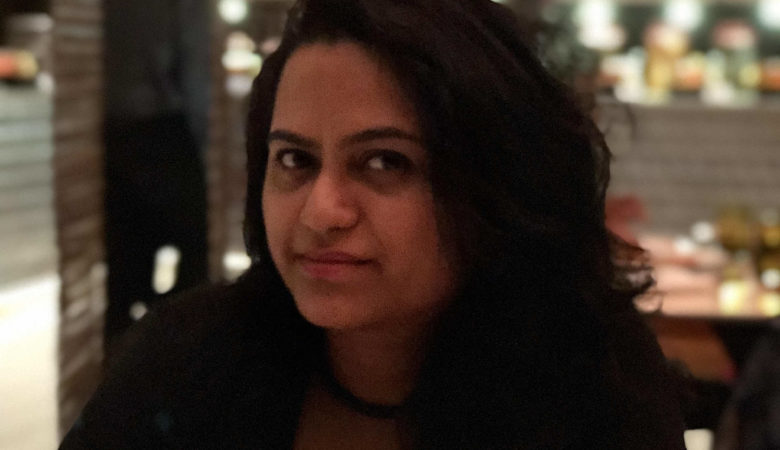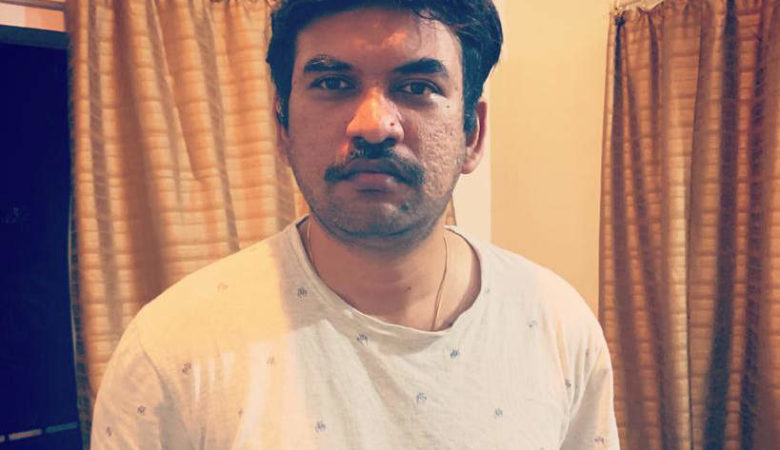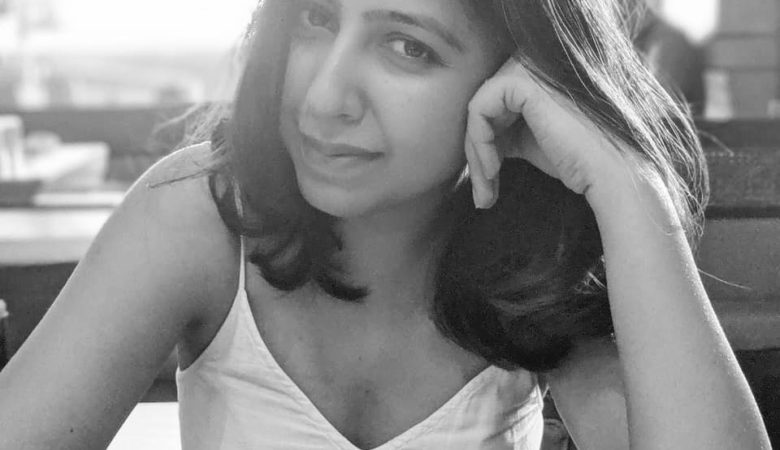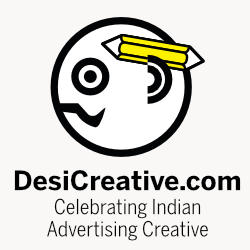Monisha R Baldawa is an alumnus of FTII, Pune (2004-07) specializing in Film Editing. She has worked on many award winning films across various platforms – fiction, non-fiction, ad films and art installations. In January 2017 she won the Filmfare award for Best Editing for the film Neerja.
As a child what were your early influences towards cinema? Art, literature, graphics, photography?
I grew up in a middle class milieu. Movies for us were family outings and I enjoyed going to the movies very much. Although I was brought up in Pune and my family is Marwadi, I watched a lot of Tamil films also because I was very close to a Tamilian family who were our next-door neighbors. More than an attraction for photography or the visual arts I was deeply attracted to stories and story telling. In fact I would look forward to power failures in the evenings when all of us would gather in the balcony and GG, my aunt would tell us stories. I was transported into the fantastic world of Indian Mythology, Jataka tales, Akbar & Birbal, Bikram & Betal and so on.
How did you first become interested in film editing?
During graduation I got myself a FM10 SLR and also learnt 2D flash animation, that was my first interaction with the Visual Arts. Later, while doing my Masters in Video production at Pune University, Prof. Samar Nakhate opened up newer dimensions of the narrative form for me. He showed me the immense possibilities that emerge out of visual syntax. I remember clearly, one afternoon, we spent hours arranging and re-arranging a set of photographs taken by me. I was dazzled by how many different meanings could be created by changing the sequence of images. I think my romance with film editing began on that day.
What steps did you take to train yourself?
I started spending most of my time in the NFAI library. I gatecrashed into the FTII evening screenings. I was watching films more acutely. I was closely involved with the ‘Aasakta’ theatre group. It was around this time that I decided to pursue the Three Year Diploma in Editing at FTII and get formal training. My time in FTII has been very precious and key in forming me and exposing me to various influences and streams in cinema.
Have you assisted anyone? How does it help one?
Mr. Sreekar Prasad, fondly called Nani Sir, was an inspiration for me even before I joined FTII. I shifted to Chennai immediately after FTII and was fortunate to get an opportunity to assist him. It’s the best kind of exposure one can wish for. His oeuvre is immense and although I was assisting on him on Nandita Das’s ‘Firaaq’, I would be a silent observer on whatever else he was editing. What I learnt by just observation is not really quantifiable. The conversations with him through the process and with his extremely generous ways of explaining things, I found in him the ideal guru. Through his work I realized, that as an editor one can excel across genres and styles and that was truly liberating and inspiring.
How did your first film project come about? Tell us something about the experience.
After shifting to Bombay my first film as an independent editor was, ‘Labels from a Global City’, directed by Surabhi Sharma. It was a non-fiction film about the working conditions of textile workers. It was a wonderful experience working with Surabhi; we’ve collaborated on many projects subsequently. Right from our first meeting, we shared a warm rapport, which made me comfortable even though it was my first film. In non- fiction films, the form of the film is generally found on the editing table and the mutual trust and respect between an Editor and Director is crucial to the process. In this film, we had to find a form, which would not be too intrusive and allow the voices of the workers to come through without too much manipulation. It was instructive for me to see how various meanings and emotions emerged during the edit and in many ways it was an ideal beginning for me as an editor.
My first fiction film was ‘Margarita with a Straw’. Shonali Bose, the director called me because Nilesh Maniyar, the co-writer and co-director of the film had recommended my name. The great thing about this project was that I was involved in it right from the scripting stage. It was a sheer delight to work with the finely nuanced performance of Kalki Koechlin. In many ways the job of the editor is to protect the performances of actors while still retaining the pace of the narrative. Working with Shonali and Nilesh was a great experience and I’m glad that the film was so well received across the world.
What were the editing challenges on Neerja? Tell us something about the process.
For Neerja, the director, Ram Madhvani devised an unique method for filming so that the actors could perform freely. The script on the plane was broken down into 6 chapters and the Climax. Each chapter was filmed as a continuous unbroken take of anywhere between 45 to 60 minutes where actors were improvising, moving freely and not necessarily following any spatial or physical continuity. There were 4 cameras filming each take and there were multiple takes for each chapter. Other than this there were the non-plane sequences which were shot in long unbroken takes with two cameras. This resulted in brilliant performances by all the actors. It also meant that I had almost 300 hours of footage to work with. To add to this we had 32 tracks of audio for each take as the mikes were spread across various zones in the plane.
I had to devise a totally new workflow for this film. The key challenge in the film was to cut the long takes into a duration that would lend itself well to the telling of the narrative without compromising the emotional and dramatic emphasis of the film. With each film one has to find a form that is in harmony with the truth of that film. It is always wonderful working with Ram Madhvani because with him this exploration of form is always an exciting journey.
What are your inspirations?
There are no finite sources of inspiration. It’s an everyday thing. I find it in people, films, books, architecture, painting, music, in situations, at work and on days it’s an almond tree!
Is film editing intuitive or is it something you learn?
Intuition is built on the foundation of learning. I think intuition is when people learn something so well, that they can perform complex actions almost without thinking – or so it seems. With editing, being intuitive, is a question of having a hunch for the possibilities of form, but that hunch comes from studying forms consciously or subconsciously across time. Intuition is also about chasing that feeling of excitement one feels when something new is created. So in a way, intuition is the practice of being close to one’s feelings.
Do you think the audience is perceptive about an edit? What kind of feedback do you get from non-film maker audience for your work?
More often than not non-film maker audience does not talk about the edit per say. They do give broader feedback about their emotional responses, performances, what part of the narrative they loved or did not and so on. One has to translate from this language and understand ones editorial choices in that light.
Your favorite films or editors? At least two of them?
Pulp Fiction, Editor – Late Sally Meneke
Dil Chahta Hai, Editor – Sreekar Prasad
Paris Autumn, Editor – Sankalp Meshram
My Camera and Tsunami, Editor – R. V. Ramani
Any hurdles you have encountered in your journey. Things that are blocks in achieving your vision while working on your film.
Hurdles and blocks in achieving my vision –
FCP Rendering time and Brain Freeze Temperatures of Air conditioning
Do you often get all that is in your wish list or is it a hard bargain every time?
The editors primary job is to present the directors vision in the best possible manner. Most of the Directors I’ve worked with plan their shoots meticulously and there is always enough material to work with. Sometimes the lack of optimal material forces you to come up with different creative solutions and that too is fruitful. Having worked extensively within the non-fiction form one realizes that often the solutions are structural.
What is in the kitty now?
I have completed the edit of a feature film, ‘Begum Jaan’ Directed by Srijit Mukherjee and I am currently working on the feature film, ‘Mom’ Directed by Ravi Udyavar.
Any advice to aspiring editors?
Cinema is an eclectic art. It’s aesthetic sources don’t necessarily come from watching films or reading books on filmmaking only. It is always rewarding to widen ones enquiry and expose oneself to other forms of expression.
Any memorable blunders?
None that I can think of!
Your dream project?
A film jointly directed by James Cameron and Bela Tarr. Starring SRK, George Clooney and Marchelo Mastrioni. The film’s premise is, the cultural impact of volcanoes on Iceland!
Who would you like to take out for dinner?
Novak Djokovic. Actually, it would be nicer if he were taking me out!
What are you listening to right now? And the most recent book? And Movie?
Listening to – Mostly Honey Singh on the radio in Uber cabs across Bombay.
Reading – Silk Roads by Peter Frankopan.
Movie – Wild Tales directed by Damián Szifron.
Neerja –
Chutney –
Kindle (Ad film) –
Margarita with a straw –
Labels from a global city –









Hmm it appears like your site ate my first comment
(it was super long) so I guess I’ll just sum it up what I submitted and say, I’m thoroughly enjoying your blog.
I too am an aspiring blog writer but I’m still new to the whole thing.
Do you have any points for beginner blog writers? I’d really appreciate it.